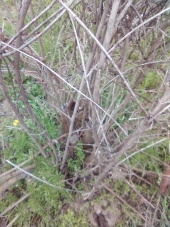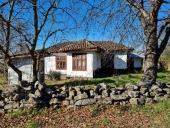
 2
2




I'm only 64! That's not to old to learn to be a permie, right?
 2
2




Visit Redhawk's soil series: https://permies.com/wiki/redhawk-soil
How permies.com works: https://permies.com/wiki/34193/permies-works-links-threads






 1
1




I'm only 64! That's not to old to learn to be a permie, right?
 3
3




Jane Mulberry wrote:I'm in the process of purchasing an old village house in Bulgaria. Climate zone 7b according to the map, quite dry averaging between 35 and 55mm a month with rain most months of the year, but likely to become drier. Along with the house comes under an acre of former pasture, unused for at least five years (maybe longer) and now colonised with black locust and wild plum. The land has some slope to the east and south, is protected by a hill to the west.
I'd like to manage it as a small coppiced or pollarded woodland for firewood and poles. It's quite weedy in parts at present, while the small wooded area on the other side of my land is grazed by wild deer and is close cropped grass under the trees. I'd considered opening the gates so the deer could graze the wooded section of my land, too, but that might mean coppicing won't work so well and I wondered if I should pollard instead. But then I read that black locust doesn't pollard well, it will sprout from the roots.
So my questions are - let the deer in or hand slash the weeds? Pollard or coppice? What trunk diameter is ideal for the first cut? What sort of rotation would be best?
Thanks for any advice!






 3
3




I'm only 64! That's not to old to learn to be a permie, right?
 3
3




Jane Mulberry wrote:Thanks, Mark!
It's not planted, as far as I know, almost all the trees look self-seeded. One section at the top of the land has trees that are bigger, probably at least five years old, primarily wild plum from an old abandoned orchard, with plenty of blackberry, too. Another section, the old donkey and sheep pasture which would have been the last to be abandoned, looks to be mostly younger black locust trees with a couple of ailanthus mixed in. All the young trees in that section are tall but none have trunks bigger than a couple of inches, most about an inch or so.
I don't know what the most dominant "weed" plants are as they're unfamiliar to me - not anything I have seen in Australia or the UK. I will try to get an identification next time I am there. But they are monsters, growing as tall as me and wide, have a slightly unpleasant medicinal smell, and are some sort of herbaceous perennial with brittle hollow stems rather than being shrubs. They produce masses of seed, make access to the area challenging and are probably competing with the trees. They could turn out to be something useful, but I feel they need to be managed rather than allowed to take over.
My options for the "weeds" are to let natural succession take care of things, allow the deer in there for a season and see if they will graze the plants I want to control while enriching the soil with manure (I suspect they would need to be starving before they would graze the monster plant), or slash and shred the "weeds" as biomass before they seed net season, and mulch under the trees with them.
Unfortunately I'm not going to live there full-time for a few years and will be doing what I can during week-long visits. It will be interesting seeing how the area looks in spring. Next visit, I will work harder to identify what is there!






 4
4




I'm only 64! That's not to old to learn to be a permie, right?
 1
1




Jane Mulberry wrote:Interesting blog post, Mark! I never realised many of those forests were coppiced, or that the pines weren't native.
The region my little piece of land is in is very different to around Sofia, as it's in the far north-east on the Danubian plain. It's steppes rather than mountains. Mostly now broadacre agricultural, any woods are grown-out hedgerows and shelterbelts on field borders or along roads. There's also a lot of self-seeded younger trees, primarily black locust, on abandoned village homesteads, mixing in with the old orchards and nut trees around houses.
I'm so blessed to have the opportunity to steward this land, but I would love to see the trend for young Bulgarians to move to cities reverse!

|
We kept yelling "heart attack" and he kept shaking his head. Charades was the tiny ad's idea.
Learn Permaculture through a little hard work
https://wheaton-labs.com/bootcamp
|




